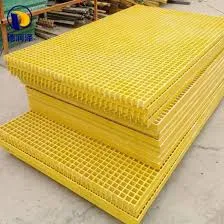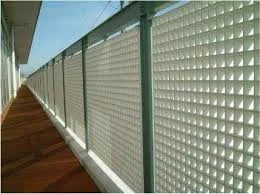
-
 Afrikaans
Afrikaans -
 Albanian
Albanian -
 Amharic
Amharic -
 Arabic
Arabic -
 Armenian
Armenian -
 Azerbaijani
Azerbaijani -
 Basque
Basque -
 Belarusian
Belarusian -
 Bengali
Bengali -
 Bosnian
Bosnian -
 Bulgarian
Bulgarian -
 Catalan
Catalan -
 Cebuano
Cebuano -
 China
China -
 China (Taiwan)
China (Taiwan) -
 Corsican
Corsican -
 Croatian
Croatian -
 Czech
Czech -
 Danish
Danish -
 Dutch
Dutch -
 English
English -
 Esperanto
Esperanto -
 Estonian
Estonian -
 Finnish
Finnish -
 French
French -
 Frisian
Frisian -
 Galician
Galician -
 Georgian
Georgian -
 German
German -
 Greek
Greek -
 Gujarati
Gujarati -
 Haitian Creole
Haitian Creole -
 hausa
hausa -
 hawaiian
hawaiian -
 Hebrew
Hebrew -
 Hindi
Hindi -
 Miao
Miao -
 Hungarian
Hungarian -
 Icelandic
Icelandic -
 igbo
igbo -
 Indonesian
Indonesian -
 irish
irish -
 Italian
Italian -
 Japanese
Japanese -
 Javanese
Javanese -
 Kannada
Kannada -
 kazakh
kazakh -
 Khmer
Khmer -
 Rwandese
Rwandese -
 Korean
Korean -
 Kurdish
Kurdish -
 Kyrgyz
Kyrgyz -
 Lao
Lao -
 Latin
Latin -
 Latvian
Latvian -
 Lithuanian
Lithuanian -
 Luxembourgish
Luxembourgish -
 Macedonian
Macedonian -
 Malgashi
Malgashi -
 Malay
Malay -
 Malayalam
Malayalam -
 Maltese
Maltese -
 Maori
Maori -
 Marathi
Marathi -
 Mongolian
Mongolian -
 Myanmar
Myanmar -
 Nepali
Nepali -
 Norwegian
Norwegian -
 Norwegian
Norwegian -
 Occitan
Occitan -
 Pashto
Pashto -
 Persian
Persian -
 Polish
Polish -
 Portuguese
Portuguese -
 Punjabi
Punjabi -
 Romanian
Romanian -
 Russian
Russian -
 Samoan
Samoan -
 Scottish Gaelic
Scottish Gaelic -
 Serbian
Serbian -
 Sesotho
Sesotho -
 Shona
Shona -
 Sindhi
Sindhi -
 Sinhala
Sinhala -
 Slovak
Slovak -
 Slovenian
Slovenian -
 Somali
Somali -
 Spanish
Spanish -
 Sundanese
Sundanese -
 Swahili
Swahili -
 Swedish
Swedish -
 Tagalog
Tagalog -
 Tajik
Tajik -
 Tamil
Tamil -
 Tatar
Tatar -
 Telugu
Telugu -
 Thai
Thai -
 Turkish
Turkish -
 Turkmen
Turkmen -
 Ukrainian
Ukrainian -
 Urdu
Urdu -
 Uighur
Uighur -
 Uzbek
Uzbek -
 Vietnamese
Vietnamese -
 Welsh
Welsh -
 Bantu
Bantu -
 Yiddish
Yiddish -
 Yoruba
Yoruba -
 Zulu
Zulu
Jan . 16, 2025 04:57
Back to list
Clarifiers & Settlers
Fiberglass reinforced plastic (FRP) pipes have gained substantial attention in recent years due to their unparalleled combination of strength, durability, and lightweight characteristics. As industries shift toward more sustainable and cost-effective materials, FRP pipes stand out as a superior choice for a wide range of applications. This article offers in-depth insights based on firsthand experiences and expertise within the industrial materials field, highlighting why FRP pipes are considered both highly authoritative and trustworthy.
Authoritative endorsements from industry organizations and guidelines, such as those from the American Society for Testing and Materials (ASTM), offer further credibility to the usage of FRP pipes. These standards provide a benchmark for quality and performance, asserting that FRP pipes not only meet but often exceed the requirements for various industrial applications. Moreover, large companies that have adopted FRP pipes report significant infrastructural advantages, both in terms of enhanced safety measures and operational cost reduction. Trustworthiness in the adoption of FRP pipes often stems from their adaptability and environmental benefits. Compared to their metal counterparts, FRP pipes offer a reduced carbon footprint during both production and transportation due to their lightweight nature. Furthermore, their corrosion-resistant properties mean that less frequent replacements are needed, thus contributing to resource conservation. Engineers and environmental scientists alike advocate for the use of FRP pipes as a response to the growing demand for more sustainable infrastructures. In summary, fiberglass reinforced plastic pipes provide an outstanding blend of practical advantages and technical sophistication that cater to modern industrial demands. The convergence of field experience, professional expertise, authoritative standards, and environmental trustworthiness underscores their importance in the contemporary landscape. As industries continue to innovate and adapt, FRP pipes remain at the forefront as a reliable, efficient, and sustainable solution.


Authoritative endorsements from industry organizations and guidelines, such as those from the American Society for Testing and Materials (ASTM), offer further credibility to the usage of FRP pipes. These standards provide a benchmark for quality and performance, asserting that FRP pipes not only meet but often exceed the requirements for various industrial applications. Moreover, large companies that have adopted FRP pipes report significant infrastructural advantages, both in terms of enhanced safety measures and operational cost reduction. Trustworthiness in the adoption of FRP pipes often stems from their adaptability and environmental benefits. Compared to their metal counterparts, FRP pipes offer a reduced carbon footprint during both production and transportation due to their lightweight nature. Furthermore, their corrosion-resistant properties mean that less frequent replacements are needed, thus contributing to resource conservation. Engineers and environmental scientists alike advocate for the use of FRP pipes as a response to the growing demand for more sustainable infrastructures. In summary, fiberglass reinforced plastic pipes provide an outstanding blend of practical advantages and technical sophistication that cater to modern industrial demands. The convergence of field experience, professional expertise, authoritative standards, and environmental trustworthiness underscores their importance in the contemporary landscape. As industries continue to innovate and adapt, FRP pipes remain at the forefront as a reliable, efficient, and sustainable solution.
Next:
Related Products









